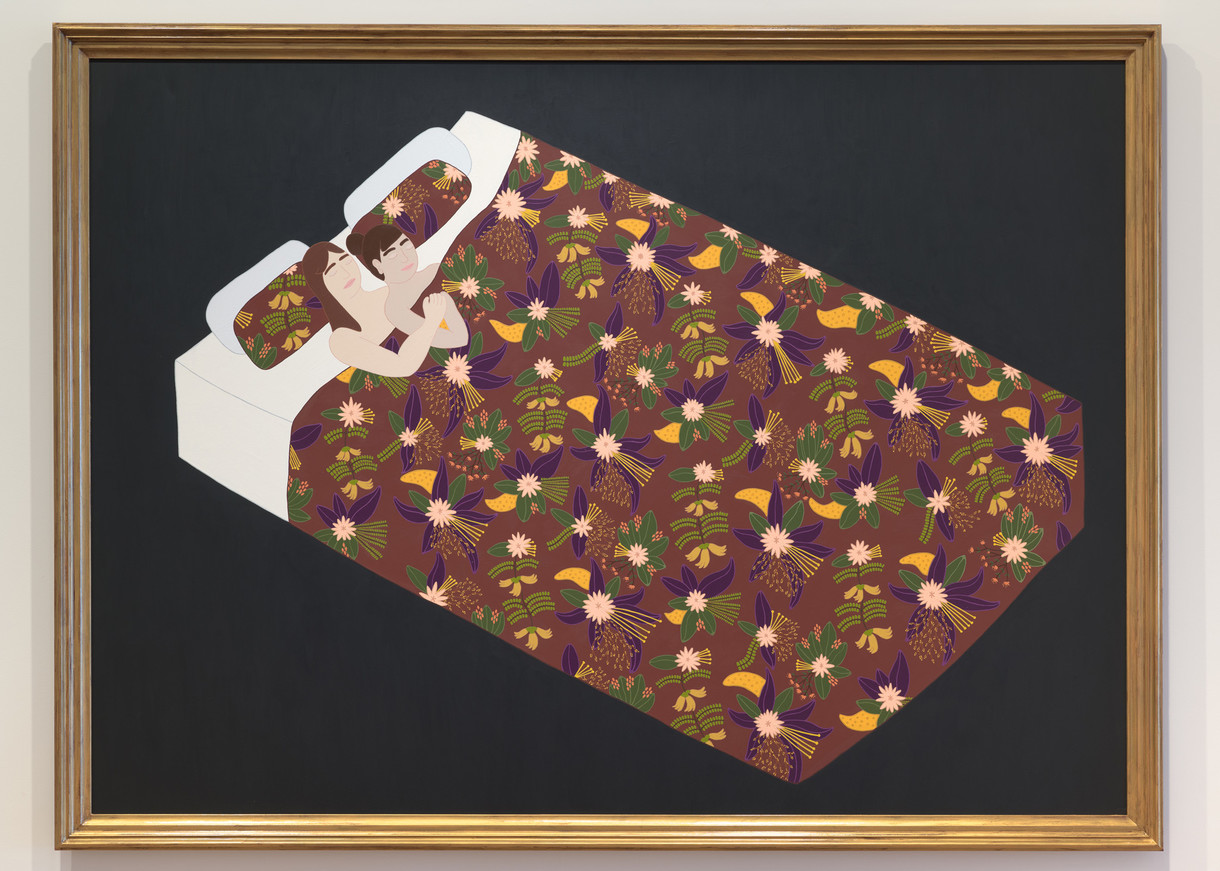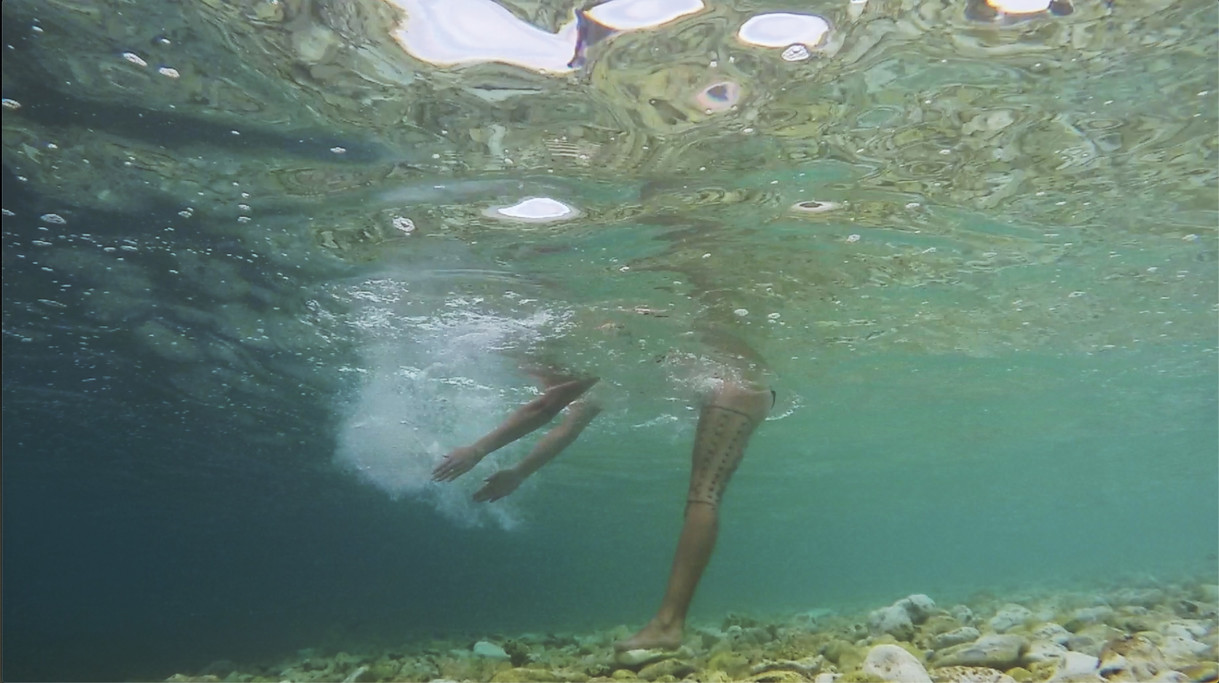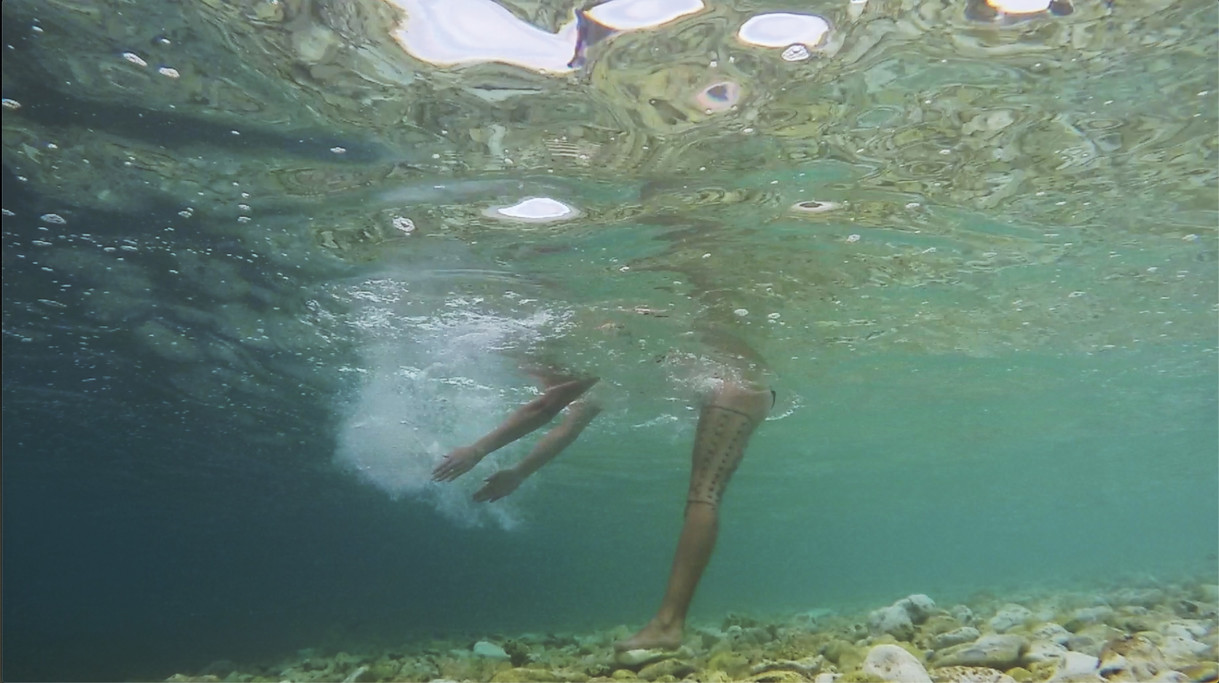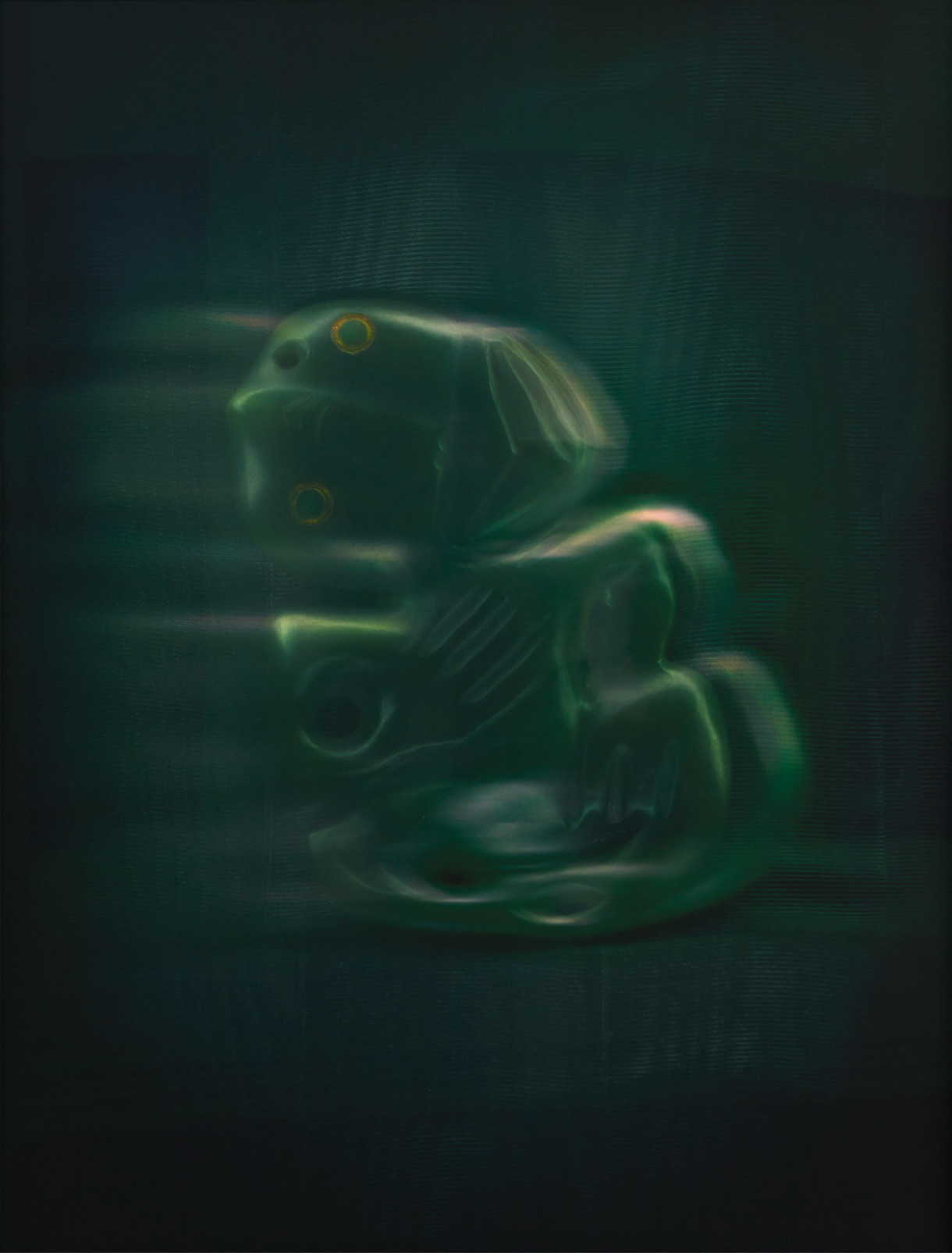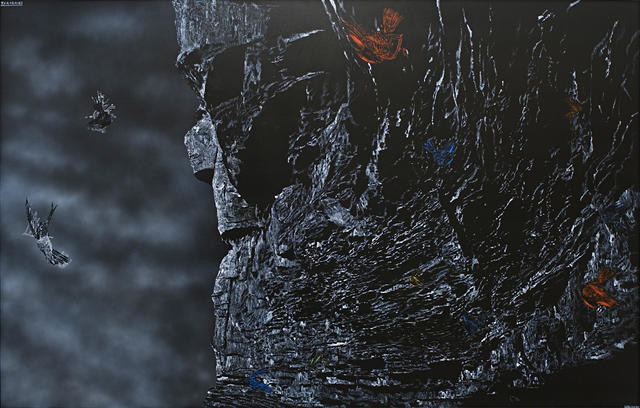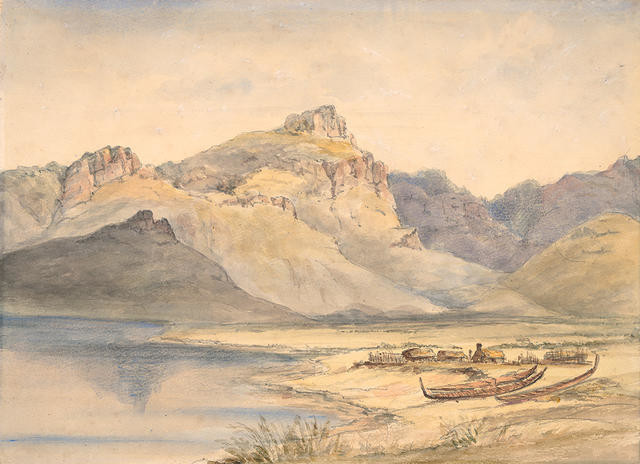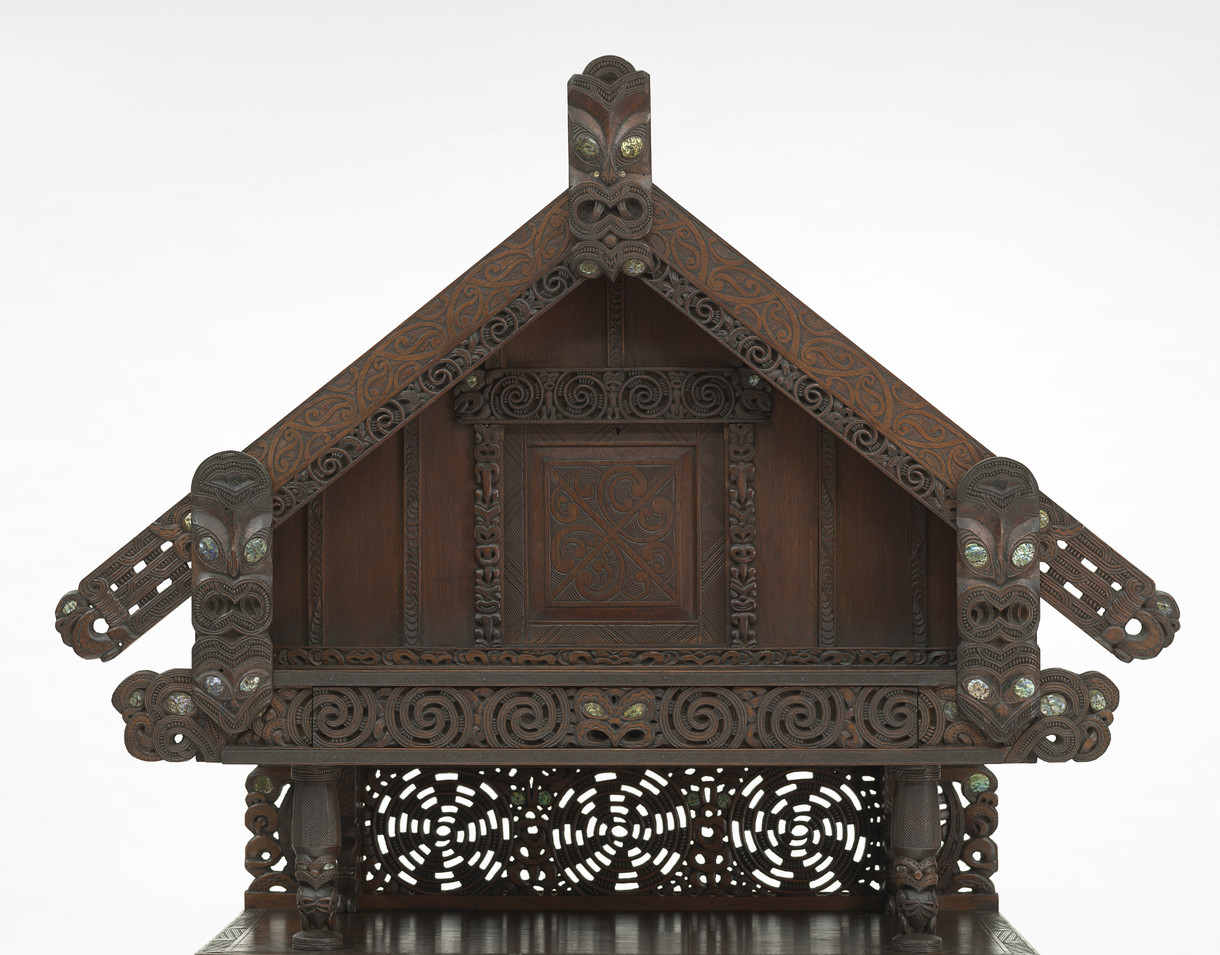B.

Lisa Reihana Sex Trade, Gift for Banks, Dancing Lovers, Sextant Lesson (18550) (19205) 2017. Pigment print on Hahnemühle paper, mounted on aluminium dibond behind acrylic. Collection of Christchurch Art Gallery Te Puna o Waiwhetū, purchased, 2018
Ātea
Te Wheke
In te ao Māori, the state of a space when cleared of obstruction is called ātea. This concept was brought to Aotearoa New Zealand from the islands of Te Moana-nui-a-Kiwa / the Pacific Ocean by Polynesian ancestors.
In te ao Māori, the state of a space when cleared of obstruction is called ātea. This concept was brought to Aotearoa New Zealand from the islands of Te Moana-nui-a-Kiwa / the Pacific Ocean by Polynesian ancestors.
Instead of fitting Māori art within the conventions of western art, the Ātea grouping invites us to consider new approaches to how Māori and Pākehā cultures might work together within an art gallery setting.
Presented together for the first time, these works span ancestral, modernist and contemporary lines of Māori art-making. We can see where traditions remain and where the influences of, and reactions to, colonial tensions are reflected back by Māori artists.
Ka ngakina te whenua, ka kīa e te Māori, he ātea. Heoi anō, he tūāhuatanga tēnā nō mai rānō, he kaupapa i haria mai i Hawaiki pāmamao.
Ānana! He Māori te kawa o tēnei taiwhanga, o tēnei whakaaturanga, arā, he whakaaturanga kāore i te herea ki ngā ture whare toi Pākehā. Mā tēnā ka toko ake te whakaaro, ka hanga pēhea tēnei motu mehemea ka mahi tahi te Māori me te Pākehā i runga tonu i te kaupapa Māori.
Mō te wā tuatahi, ka whakaaturia ēnei toi Māori mai i te ao kōhatu tae noa mai ki tēnei wā. E kitea ana ngā āhuatanga taketake e toi tū ana. E kitea hoki ana ngā ākinga o te ao Pākehā.
